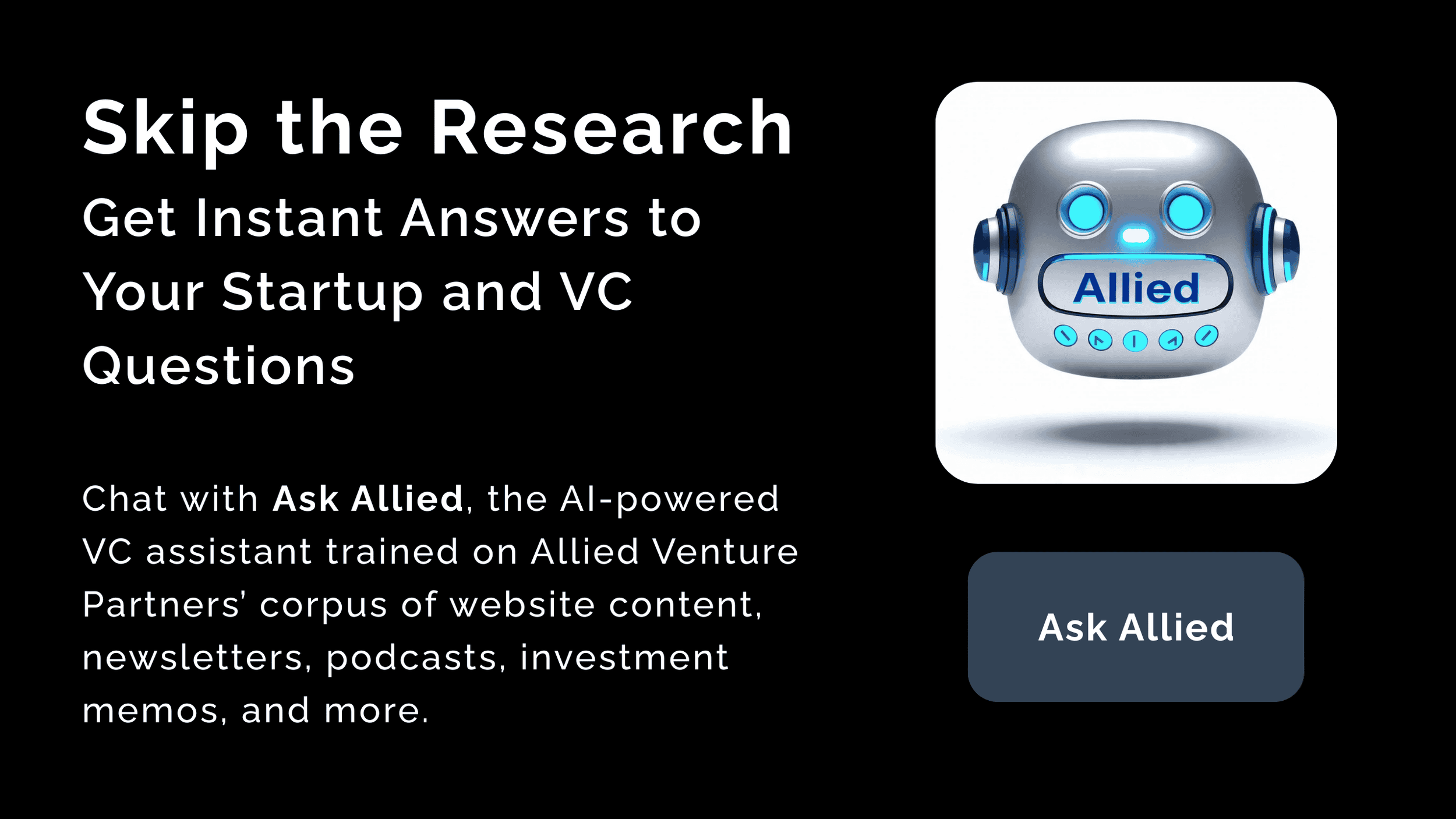Retention Strategies for Early-Stage Tech Startups
Losing employees at an early-stage tech startup can derail growth, disrupt projects, and drain resources. Startups face unique challenges like limited cash flow, high-pressure environments, and competition from larger companies offering better pay and benefits.
Key reasons employees leave include low salaries, lack of career growth, and burnout. But the right retention strategies can help:
Offer Competitive Pay: Benchmark salaries, simplify equity plans, and add perks like bonuses or professional development stipends.
Support Career Growth: Define clear paths for promotion, provide mentorship, and fund skill-building opportunities.
Strengthen Workplace Culture: Celebrate achievements, maintain open communication, and respect work-life balance.
Affordable Perks: Health insurance, flexible schedules, and team-building activities can boost morale without breaking the bank.
Tracking metrics like turnover rates and employee satisfaction helps refine these efforts. Investors can also assist by funding retention programs and offering mentorship through their networks. Retaining key talent early on isn’t just about avoiding costs - it’s critical for scaling and long-term success.
How Can Founders Improve Employee Retention? - Founders Supporting Founders
Common Retention Problems in Tech Startups
Early-stage tech startups often face unique challenges when it comes to retaining talent. With limited resources and a less-established reputation, they’re at a disadvantage compared to larger, more established companies. Startups must find ways to overcome these hurdles while competing with industry giants for top-tier employees.
One of the biggest issues is financial limitations. Startups simply can’t match the base salaries offered by larger firms. While equity is often used as a selling point, it doesn’t always deliver the value employees expect, especially when they need steady income to cover essentials like rent or loan payments. This creates a trust gap, making it harder for startups to attract and keep talent.
Another challenge is the demanding nature of startup work. Employees are expected to juggle multiple roles and work under constant pressure. Every product release or sprint feels like a make-or-break moment, which can lead to burnout much faster than in companies with more defined roles and established processes.
On top of that, startups are now competing on an international scale. With remote work becoming the norm, larger companies offering higher pay, better benefits, and clearer career growth paths can easily lure talent away - even from across the world. For startups, this competition isn’t just local; it’s global, making the fight for talent even tougher.
These retention problems don’t just disrupt daily operations - they also drive up costs and create knowledge gaps that are hard to fill.
Turnover Rates and Costs for Startups
Turnover is often a bigger issue for startups than for larger companies. Losing even a handful of key team members can throw operations into disarray and hurt team morale. And the costs? They’re steep. Recruiting, onboarding, and training new hires not only drain financial resources but also slow down productivity - delaying progress on critical projects.
What’s worse, when employees leave, they take valuable institutional knowledge with them. For example, if a founding engineer or a long-time team member departs, they take with them an in-depth understanding of the company’s system architecture, client relationships, and history. Replacing that expertise isn’t easy. New hires need time (often significant time) to get up to speed, which can stall momentum.
Turnover also has a ripple effect. When one person leaves, it can prompt others to reevaluate their own roles, potentially leading to more exits. This creates a vicious cycle where remaining employees face increased workloads, further exacerbating the problem and threatening the company’s overall stability.
Why Keeping Employees Matters During Growth
As startups move from the proof-of-concept phase to scaling and growth, retaining key talent becomes even more critical. Stability during this phase is essential for hitting growth targets and meeting investor expectations. Losing core team members at this stage can derail fundraising efforts and weaken the company’s market position.
Investors, whether venture capitalists or angels, pay close attention to team stability. High turnover can signal deeper issues, like weak leadership or a shaky company culture. A cohesive, consistent team is not only a sign of a healthy organization but also a strong predictor of long-term success - something investors prioritize when deciding on future funding.
Early hires often grow into leadership roles, making their retention even more important. When these individuals leave, it can lead to fragmentation within the team and slow down product development. They’re often the ones who deeply understand the company’s mission, values, and technical foundation. Their departure can dilute the company’s identity and disrupt the momentum needed to scale quickly.
Moreover, continuity in product development relies heavily on keeping core technical talent. Engineers who’ve been part of the early stages of a project hold critical insights into past decisions and system evolution. Replacing this knowledge isn’t just time-consuming - it can also open the door for competitors to gain an edge while the startup struggles to regain its footing.
Main Reasons Employees Leave Startups
Employees often leave startups due to issues like inadequate pay, limited career growth, and unsustainable work environments. While many are drawn to startups for their dynamic nature and the promise of high responsibility and potential rewards, they also expect fair compensation, opportunities to grow, and a manageable work-life balance. When these expectations fall short, even the most committed team members may start looking elsewhere. Let’s dive deeper into these challenges.
Pay and Equity Problems
One of the biggest reasons employees leave startups is dissatisfaction with compensation. Startups often struggle to compete with the salaries offered by larger, more established companies, like Meta, Amazon, or Alphabet. To make up for this, they frequently lean on equity as a key part of their pay structure. However, many employees don’t fully grasp the value of equity until they face the reality of vesting schedules or dilution, which can diminish its appeal.
For employees with pressing financial obligations - like rent, mortgages, or student loans - equity doesn’t help pay the bills. A lower base salary can create financial strain, forcing employees to prioritize immediate stability over the potential long-term rewards of equity, especially in expensive cities like San Francisco, New York, or Vancouver. This gap between expectations and reality can push employees to seek roles that offer steady, competitive pay.
Limited Career Growth Options
Startups, by nature, operate with smaller teams, which often limits opportunities for advancement. With only a handful of senior positions available, ambitious employees may find themselves stuck without clear paths to grow. This is particularly frustrating for mid-career professionals who joined the company expecting fast-tracked promotions and career development.
Another challenge is the lack of structured growth opportunities. While wearing multiple hats is common in startups, it can lead to repetitive tasks and stagnation. Employees often miss out on mentorship, professional training, or regular performance reviews that could help them develop their skills. Over time, this lack of clarity about their future within the company can prompt even motivated employees to move on.
Work-Life Balance and Culture Issues
Startups are known for their fast-paced and often unpredictable work environments, but this can come at a cost. Job roles are frequently ambiguous, with employees taking on tasks outside their expertise. While some thrive in this flexibility, others may feel overwhelmed, stretched too thin, or underutilized.
Company culture also plays a critical role. Many startups are heavily influenced by the personalities and values of their founders or early leaders – think about Steve Jobs, Elon Musk, or Jeff Bezos. While this can create a strong identity, it can also alienate employees whose values or work styles don’t align. Feeling out of sync with the company’s culture or leadership can leave employees questioning their place in the organization.
When you combine these challenges - uncompetitive pay structures, limited career growth, and cultural mismatches - it creates an environment where even the most dedicated employees may feel the need to leave in search of better opportunities elsewhere.
How to Improve Employee Retention
Now that we've pinpointed the key reasons employees leave startups, let's tackle some actionable strategies to help you build a more loyal and engaged team. These solutions address challenges like pay, equity, and career stagnation - issues that often lead to turnover - and aim to create a workplace where employees want to stay for the long haul.
Offering Competitive Pay and Equity Packages
Start by benchmarking salaries in your local market. Tools like Glassdoor, PayScale, and industry-specific reports can give you a clear picture of what competitive compensation looks like. While you might not match the hefty packages offered by tech giants, you can still stay competitive within your startup's ecosystem.
Make equity easy to understand. Many employees struggle to grasp how equity works, which can diminish its value as a retention tool. Use clear, visual examples to explain how equity could grow - from your startup's current valuation to future milestones - so employees see its potential.
If cash flow is tight, think outside the box. Consider performance bonuses tied to company goals, extra vacation days, or stipends for professional development. Some startups even offer equity refresh grants each year to ensure employees maintain a sense of ownership as the company evolves.
Be transparent about your compensation philosophy. Share how pay and equity are structured and outline what employees can expect as the company grows. This openness builds trust and helps your team make informed decisions about their future with you.
While fair pay is essential, creating clear growth opportunities is equally important to keeping your team engaged.
Creating Career Development Opportunities
Define clear career paths. Lay out the skills, responsibilities, and accomplishments required to move from one role to the next - whether that's advancing from junior to senior positions or transitioning from an individual contributor to a leadership role. Having concrete milestones gives employees something to strive for.
Establish mentorship opportunities. Pair junior employees with senior team members to guide their growth, and tap into your network to connect employees with external mentors. For example, organizations like Allied Venture Partners, with our extensive network of angels and VCs, can provide mentorship resources that smaller teams might lack.
Prioritize regular one-on-one meetings. Use these sessions to discuss career goals, identify skill gaps, and create tailored growth plans. Whether held monthly or bi-weekly, these meetings signal that you’re invested in your employees' development.
Set aside funds for professional growth. Even a modest budget, say $1,000–$2,000 per employee annually, can go a long way. Employees can use this for courses, certifications, or attending industry events, all of which benefit both them and your company.
Encourage cross-training and job rotation. Let employees explore different roles within the company. For instance, a marketing coordinator could learn about sales, or a developer might join product strategy discussions. This not only broadens their skill set but also deepens their understanding of the business.
Beyond pay and career growth, a strong workplace culture is the glue that keeps employees committed.
Building a Culture That Inspires Loyalty
Be transparent about company performance and goals. Regularly share updates on revenue, customer metrics, and key decisions. When employees understand the bigger picture, they feel more connected to the company’s success.
Establish clear communication practices. Hold regular all-hands meetings and use tools like Slack or Microsoft Teams to keep everyone on the same page. Ensure employees know when their input is needed and valued.
Celebrate achievements often. Whether it’s a shout-out during team meetings, a company-wide email, or an Employee of the Month recognition, acknowledging contributions boosts morale and reinforces a positive work environment.
Create a safe space for open dialogue. Employees should feel comfortable sharing ideas, admitting mistakes, and asking questions. When leaders model vulnerability and openness, it sets the tone for a supportive workplace.
Respect work-life boundaries. Avoid sending emails late at night or over the weekend unless absolutely necessary. Encourage employees to take their vacation time and prioritize a healthy balance between work and personal life.
Encourage social connections. For remote teams, host virtual coffee chats. In-office teams might enjoy monthly lunches or quarterly off-site events. Building these personal connections strengthens team bonds and significantly improves retention and job satisfaction.
Affordable Benefits and Perks for Startups
Building a strong workplace culture doesn’t have to break the bank. By focusing on perks and benefits that employees genuinely value, startups can create a supportive environment while keeping expenses under control. The key is understanding your team’s priorities and finding thoughtful, cost-effective ways to address them. These perks work alongside competitive salaries and clear career growth opportunities to meet employees’ immediate needs.
Health, Wellness, and Flexible Work Benefits
Health insurance is a cornerstone benefit. Startups can begin by covering part of the premiums, gradually expanding coverage as revenue grows. Partnering with a Professional Employer Organization (PEO) can help secure better group rates, and using services like PTO Exchange can help employees unlock the full value of their unused paid time off.
Mental health support is equally important. Consider offering services like Aura Health or allocating mental health days to promote employee well-being.
Flexible work arrangements - such as remote work options, adjustable hours, or alternative schedules - offer immense value without significant costs. Using a service like GroWrk can make the logistics of distributed workforces seamless.
Small monthly stipends can also go a long way. For instance, you could provide funds for gym memberships, fitness classes, or ergonomic equipment to support employees’ physical health.
Professional Development Opportunities
Investing in your team’s growth doesn’t have to be expensive. Set an annual budget for each employee to take online courses, earn certifications, or attend industry events. Platforms like Coursera or LinkedIn Learning make continuous education accessible and affordable.
Maximize learning opportunities by rotating event attendance among team members and hosting internal knowledge-sharing sessions afterward.
Cost-effective ideas like book clubs or lunch-and-learn sessions encourage ongoing education. By allocating a small budget for books and organizing regular discussions, you can promote knowledge-sharing. You might even invite local entrepreneurs or experts to speak.
Skill-sharing programs are another great option. Team members can teach each other specialized skills. For example, a developer could introduce coding basics to the marketing team, or a designer could lead a session on visual communication. These initiatives not only enhance skills but also strengthen team collaboration.
Team Building and Connection Programs
Creating a sense of connection doesn’t require extravagant spending. Organize casual team lunches or try “lunch roulette” to encourage cross-department interactions.
Plan affordable off-site activities like volunteer outings, cooking classes, or escape room challenges. Local venues such as parks, community centers, or even a team member’s home can keep costs low.
Virtual events - such as game nights, cooking sessions, or coffee chats - are another way to maintain team bonds, especially for remote teams. Adding a personal touch, like sending care packages, can make these experiences even more meaningful.
Simple recognition programs can have a big impact on morale. Peer-nominated awards, periodic celebrations of achievements, or a digital “wall of fame” help employees feel appreciated. Small rewards like gift cards, extra time off, or exclusive perks can further boost motivation.
Lastly, company swag isn’t just about branding - it’s a way to build team identity. Thoughtfully chosen items, like high-quality water bottles or notebooks, can foster a sense of belonging.
Measuring Retention
Understanding retention challenges is one thing, but tracking progress through measurable metrics is where the real insight lies. By focusing on the right data, you can pinpoint areas for improvement and refine your strategies.
Key Retention Metrics to Track
Overall Retention Rate: This is calculated as (remaining employees ÷ starting headcount) × 100. For example, if 18 out of 20 employees stay, your retention rate is 90%. This metric provides a big-picture view of how well you're holding onto your workforce.
Voluntary Turnover Rate: This metric zeroes in on employees who choose to leave on their own, excluding layoffs or terminations. It’s a useful way to uncover potential issues like dissatisfaction with job roles, compensation, or career progression.
New Employee Turnover Rate: This tracks how many employees leave during the early stages of their employment (e.g., within the first 90 days or year). A high rate here could highlight flaws in your hiring process or onboarding experience.
Keeping a close eye on these metrics over time can help you adjust and fine-tune your retention strategies for better results.
How Investors Can Help with Retention
Retention strategies don’t have to rely solely on internal efforts. Investors can play a pivotal role in strengthening a company’s ability to retain talent. The best investors bring more than just funding to the table - they act as strategic partners, offering access to resources, expertise, and connections that early-stage startups often lack.
Leveraging Investor Networks for Mentorship and Resources
Investor networks are a goldmine for mentorship and resources. Take Allied Venture Partners, for example. Our network of over 2,000 angels and venture capitalists across North America connects startups with seasoned entrepreneurs who’ve navigated similar challenges. This kind of mentorship is especially valuable for first-time founders who may still be learning the ropes of managing teams and designing effective organizational structures.
Through these connections, investors can provide guidance on key areas like structuring equity compensation or creating career progression plans - both of which are crucial for keeping top talent engaged and motivated. Beyond financial backing, this mentorship ensures that startups can make informed, strategic decisions that directly support retention.
Allocating Funds for Retention Programs
Turnover is expensive - recruiting and training new hires can take a serious toll on a company’s budget. That’s where investor funding comes in. By supporting retention initiatives, investors help startups turn employee retention into a smart financial investment. Whether it’s adjusting salaries to stay competitive, enhancing benefits, or offering professional development opportunities, investors can help founders see retention spending as a way to save on long-term costs.
For instance, at Allied, we strive to complete the funding process in just four weeks or less, enabling startups to act quickly to acquire and retain key talent. This prompt financial support empowers companies to prioritize initiatives with the most impact, ensuring they keep their best employees onboard.
In short, investor networks do more than write checks - they guide and enable startups to implement retention strategies that are both effective and cost-efficient.
Conclusion: Making Retention a Priority
Employee retention isn’t just a nice-to-have - it’s critical to the survival and growth of your startup. Early-stage tech companies often face turnover rates of 25%, double the national average for other industries[4]. When you’re operating with a lean team, every departure feels like a major setback because each person plays a vital role.
Startups that prioritize retention from the beginning set themselves up for long-term success. By focusing on competitive compensation, tailored career development, and creating inclusive work environments early on, you’re building a culture that can grow with you. These early efforts aren’t just expenses - they’re investments that will yield long-term rewards.
Take real-world examples: Hirex found that introducing a buddy system for onboarding new hires resulted in 65% of startup employees feeling more connected to the team culture, significantly reducing early turnover[2]. Another company, Burkland, offered skill-building sabbaticals, and employees returned with advanced knowledge and renewed enthusiasm, directly contributing to innovation and improved retention rates[1]. These stories show that thoughtful retention strategies can deliver measurable results.
The financial side of retention is just as important. Replacing an employee can cost 1.5 to 2 times their annual salary[3]. This is why investors like Allied Venture Partners not only provide funding but also offer mentorship and resources to help startups strengthen their retention strategies.
To make retention efforts effective, you need to measure their impact. Keep an eye on metrics like turnover rates, employee satisfaction scores, and participation in development programs. Tools like pulse surveys and regular one-on-one meetings can help identify potential disengagement early, giving you the chance to address issues before they lead to resignations.
Retention is more than just numbers - it’s about people. Your early team members joined because they believed in your mission and wanted to be part of building something meaningful[5]. If they don’t feel valued as true stakeholders, they might leave for more stable opportunities. Show them they matter by offering meaningful equity, clear career paths, and a workplace culture that genuinely values their contributions.
FAQs
How can early-stage tech startups offer competitive compensation with limited budgets?
Startups in their early stages often attract talent through equity-based incentives like stock options or restricted stock units. These give employees a chance to share in the company’s long-term success without putting a heavy strain on immediate cash resources.
You can also sweeten the deal with performance-based bonuses and flexible perks. Think remote work opportunities, wellness stipends, or professional development funds. These options are budget-friendly and can make your company stand out to skilled professionals looking for more than just a paycheck.
How can startups help employees understand and appreciate equity as part of their compensation?
Startups can help their teams grasp the value of equity by prioritizing transparency and ensuring effective communication. One way to do this is by hosting regular workshops or meetings that break down the basics of equity - its structure, vesting schedules, and the potential rewards it offers over time. Using straightforward, relatable examples can make these concepts easier to understand, showing how equity ties directly to the company’s growth and success.
Educational initiatives like an "Equity 101" session can be a game-changer, giving employees a clearer picture of what equity means for them. Pair this with an open-door policy that encourages questions, so no one feels left in the dark. When employees feel informed and confident, it not only builds trust but also aligns their goals with the company’s long-term vision.
What are effective ways to maintain a healthy work-life balance in the fast-paced environment of a tech startup?
Balancing work and personal life in the fast-paced world of tech startups can feel like a tough nut to crack, but it's entirely doable with the right approach. One of the most important tools? Smart time management. Focus on prioritizing tasks and setting clear boundaries to keep burnout at bay. It’s also essential to encourage your team to take regular breaks and truly unplug after hours.
Building a supportive workplace culture plays a big role too. Offering flexible work options, like remote work or adjustable schedules, allows employees to better manage their personal responsibilities. And don’t overlook the value of wellness programs - whether it’s providing mental health resources or fitness perks, these initiatives can make a big difference in helping your team manage stress and stay engaged.
When startups create a culture that genuinely values balance, they’re not just helping their employees - they’re boosting satisfaction, retention, and overall productivity. It’s a win-win.




